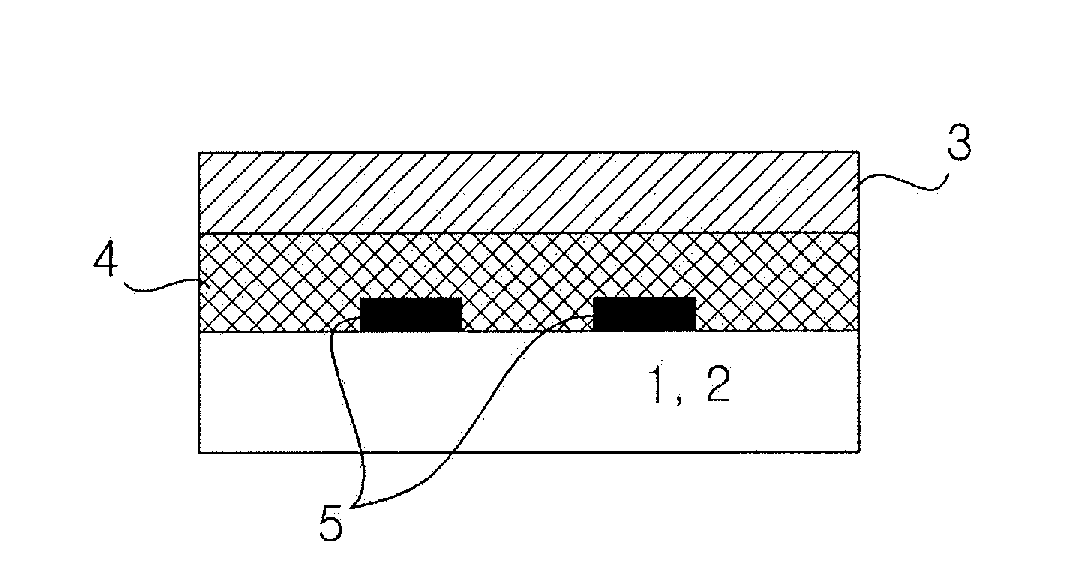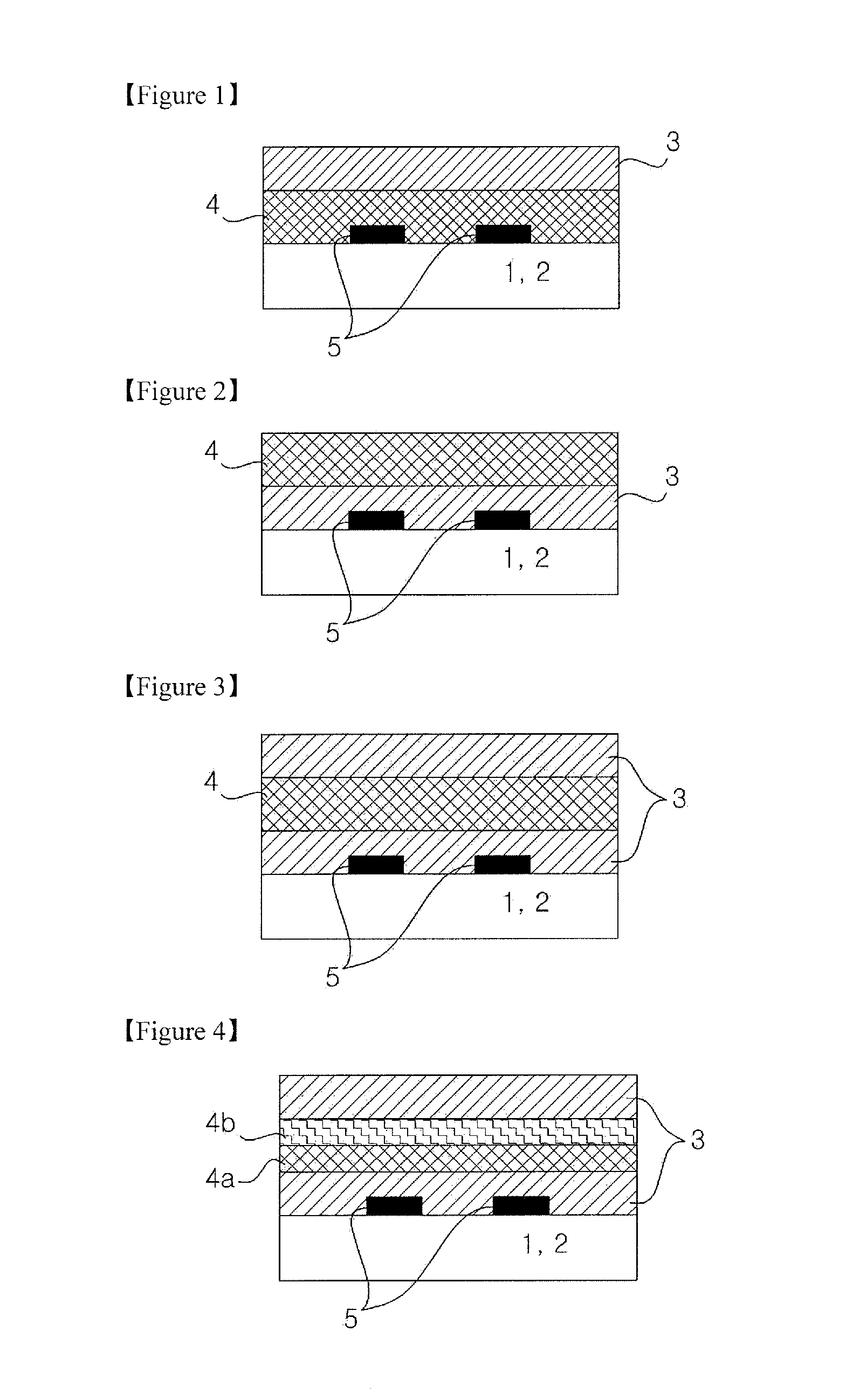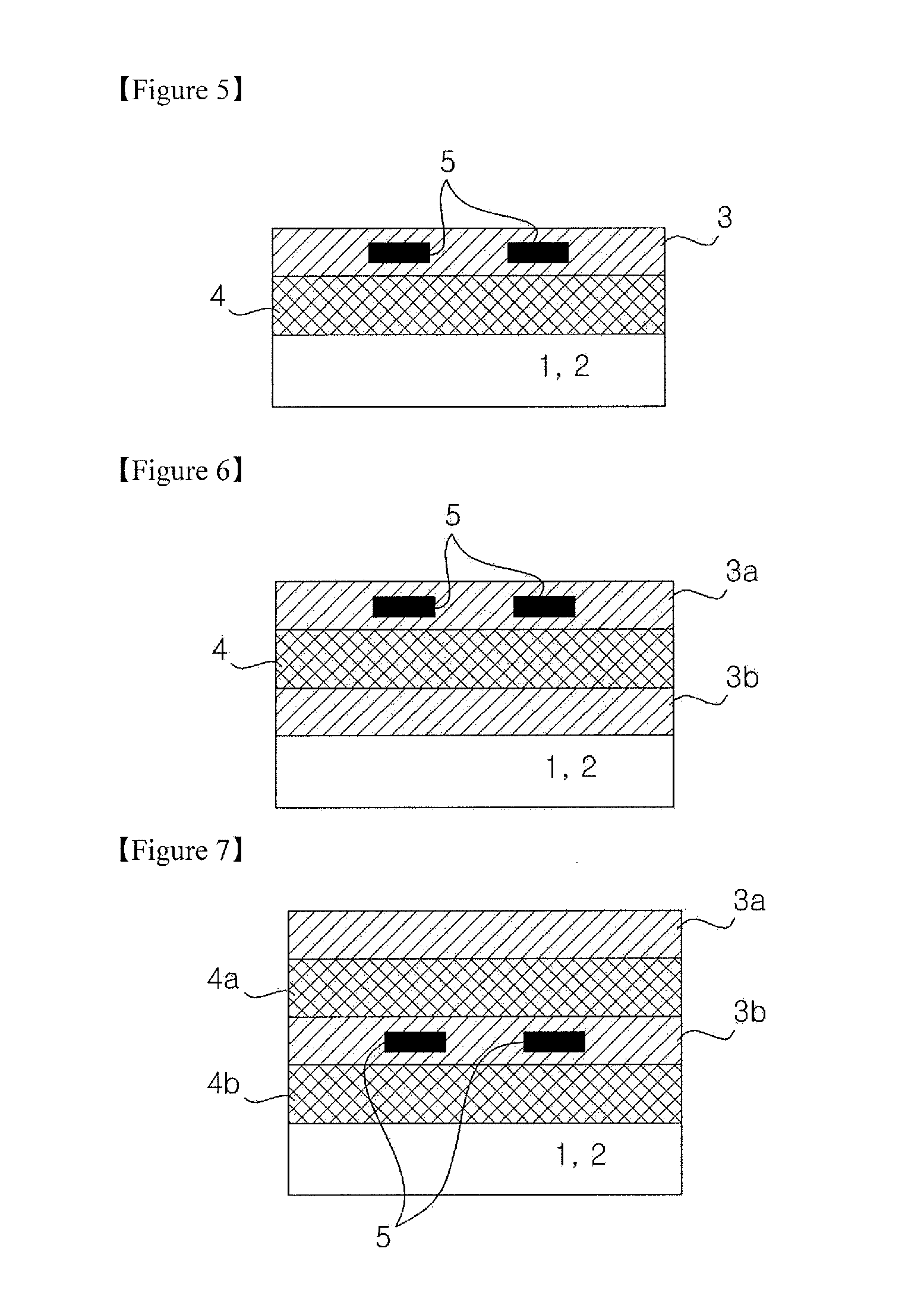Passive layer for attenuation of near-field electromagnetic waves and heatdissipation including graphene, and electromagnetic device including the same
a near-field electromagnetic wave and heat dissipation technology, applied in the direction of inorganic insulators, insulating bodies, modified by conduction heat transfer, etc., can solve the problem of frequent malfunction of devices without normal operation, interference with each other, and hybridization of dielectric noise-radiating active elements with passive elements, etc. problems, to achieve the effect of reducing noise, reducing interference, and removing hea
- Summary
- Abstract
- Description
- Claims
- Application Information
AI Technical Summary
Benefits of technology
Problems solved by technology
Method used
Image
Examples
examples
1. Growth of Large-Area Graphene Layer on Copper Foil
[0087]An about 7.5 inch quartz tube was wrapped with a Cu foil (thickness: 25 μm, size: 210×297 mm2, Alfa Aesar Co.) to form a roll of the Cu foil. The quartz tube was inserted into and fixed to an about 8 inch quartz tube. Thereafter, the quartz tube was heated to 1,000° C. at 180 mTorr under a flow of 10 sccm H2. After the temperature of the quartz tube reached 1,000° C., the quartz tube was annealed for 30 min while maintaining the hydrogen flow and pressure. Subsequently, a gas mixture including a carbon source (CH4:H2=30:10 sccm) was supplied to the quartz tube at 1.6 Torr for 15 min to grow graphene on the Cu foil. The graphene-grown Cu foil was cooled to room temperature at a rate of about 10° C. / s under a flow of H2 at a pressure of 180 mTorr in a short time to obtain a graphene layer grown on the Cu foil.
2. Coating of Graphene Protective Film by Roll-to-Roll Process
[0088]Thereafter, a flexible PET polymer substrate having...
PUM
| Property | Measurement | Unit |
|---|---|---|
| Flexibility | aaaaa | aaaaa |
| Attenuation coefficient | aaaaa | aaaaa |
| Dielectric constant | aaaaa | aaaaa |
Abstract
Description
Claims
Application Information
 Login to View More
Login to View More - R&D
- Intellectual Property
- Life Sciences
- Materials
- Tech Scout
- Unparalleled Data Quality
- Higher Quality Content
- 60% Fewer Hallucinations
Browse by: Latest US Patents, China's latest patents, Technical Efficacy Thesaurus, Application Domain, Technology Topic, Popular Technical Reports.
© 2025 PatSnap. All rights reserved.Legal|Privacy policy|Modern Slavery Act Transparency Statement|Sitemap|About US| Contact US: help@patsnap.com



